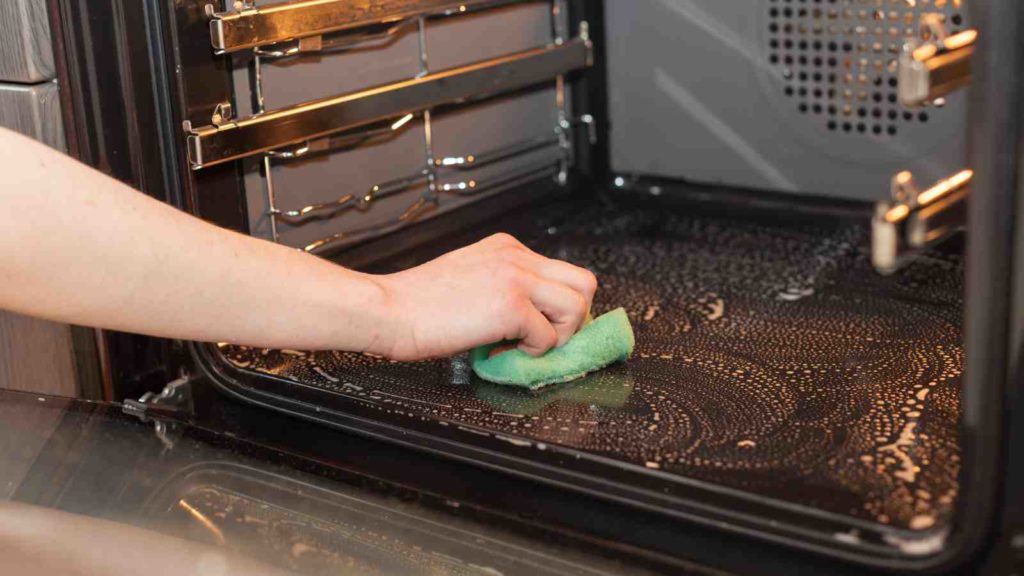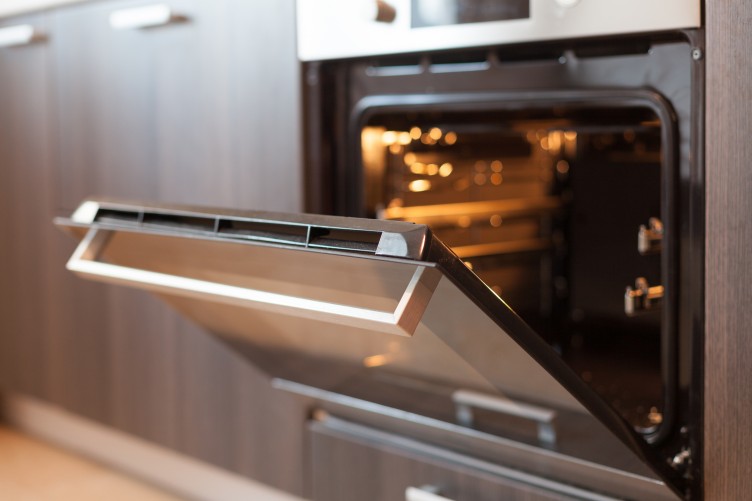Deep Clean Your Oven Naturally
Cleaning your oven is likely the in your list of chores, but it is a necessary task and something that can quickly get out of control.
The accumulated grease and grimes in your oven can affect the quality of the food you cook in it plus look unsightly potentially leading to odours or poor hygiene too.
Depending on how often you use your oven, it may need to be cleaned every couple of weeks or two to three times a year.
However, don’t hold off cleaning when you see some tell-tale signs that it needs your attention already.
One of the signs is your oven’s general appearance—crust and residue on the bottom, or grease and grime covering the door or splattered everywhere inside.
Its odor is also a signal that it needs some deep cleaning.
When you notice a distinct smell when you turn on the oven, it suggests that there are lingering grease and dirt that you need to remove now.
Any smoke is also a sure sign of significant buildup of grease and dirt, because a clean oven should not smolder and is definitely something that requires immediate attention.
There are various methods you can use to deep clean your oven.
One is through its self-clean function, which is often only available for new ovens, and is also not recommended for ovens that have gathered a significant amount of dirt.
What a self-clean function does is to heat up the oven to 550 degrees, enough to melt and remove the grease and grime.
When done, you will see white ash at the bottom that you will remove once the oven has cooled down.

However, with a large amount of buildup, using the self-clean function can do more harm than good and even lead to a fire. So ideally, the self-clean function should only be used on ovens that are slightly dirty.
There are also commercially available cleaning products. They work effectively in removing the buildup, but the chemicals can be harsh and can leave harmful vapors in your oven and home.
The best way to go is to use all-natural cleaning agents that are safe and non-toxic. Plus, they are often already available in your kitchen cupboards.
A bowl of hot water “baked” inside the oven for 20 to 30 minutes can help loosen any grime, which you can wipe off later.
A lemon cut in half and placed in a medium-sized bowl with water and heated in the oven to 250 degrees can also help remove grease and grime.
Baking soda and vinegar that are popular natural cleaning agents can also do wonders in deep cleaning your oven.
Baking soda is basic and vinegar is acid, and mixing them together can result in a good cleaning solution.
Baking soda absorbs odor and is slightly abrasive that can dislodge particles and remove stains. Vinegar’s acidity counteracts with some icky buildups such as soap scum and stains.
Here are the tips on how you can deep clean your oven using baking soda and vinegar and say goodbye to the buildup of grease and grimes:
How To Deep Clean Your Oven Naturally

1. Prepare the materials you will need
- Baking soda
- Water
- Small bowl or any container
- Rubber gloves
- Small paintbrush or an old toothbrush
- Silicone spatula or plastic spoon
- Damp cloth or sponge
- Scouring pad
- Vinegar
- Spray bottle
- Dish soap
2. Make a baking soda and water paste
In a small bowl, mix ½ cup of baking soda and 2 to 3 spoons of water. Add a bit more baking soda or water until you achieve your desired spreadable paste. Set aside.
3. Remove the racks
Remove the racks of the oven, as well as other detachable items like pizza stone and thermometer.
Soak the racks in soap dish and warm water and let it sit for a few hours.
If there is a significant buildup of dirt on the racks, apply the baking soda paste and let it sit for a few hours as well. Pour vinegar on top and scrub the racks using a scouring pad. Then rinse well, dry and set them aside.
4. Apply the paste on the oven
Put on the gloves and using a small paintbrush or an old toothpaste, spread your baking soda paste on the inside of your oven, including every corner and crevices.
Put an extra paste on spots with tough and burnt-on dirt. Don’t put the paste on the heating elements or where the gas comes through.
Close the oven and allow the paste to sit for 10 to 12 hours or overnight.
5. Wipe down all surfaces
After 10 to 12 hours, put your gloves on and take the sponge or damp cloth.
Wipe down the surfaces to remove the baking soda paste along with grimes, grease and food buildup.
Use the plastic spoon or silicone spatula to remove extra hardened paste and dirt that won’t come off easily.
Put the vinegar in a spray bottle and spritz on extra sticky spots. Wait for it to react with baking soda and foam, then wipe off all the foam.
6. Do a final wipe-down
With a damp cloth, wipe down all the remaining baking soda paste and vinegar residue until they are gone. Also wipe down the door using a soft cloth with water and vinegar.
Put back the racks and everything else you removed earlier in the oven, and you’re done!

Bonus tips:
If you don’t like the smell of vinegar, add two to three drops of essential oil that can act as a natural degreaser. Tea tree oil and lemon oil can leave a nice scent, making your oven smell fresh after it was cleaned.
Why not seek professional help?
Cleaning the oven can be a daunting task for many people, especially those who have a full schedule every day.
Enlist the help of Happy Maids Green Cleaning to take over the dirty work, and get the burden lifted off your shoulder.
By setting an appointment for a professional house cleaning in Maryland, you do can save time and energy from doing the work yourself.
When you don’t have proper knowledge or experience in cleaning, it can damage your appliances.
You already spent money on your oven, so it only makes sense to take care of it.
Letting our team of trained cleaning technicians take care of this chore can help you ensure that your oven will be on top shape for longer.

